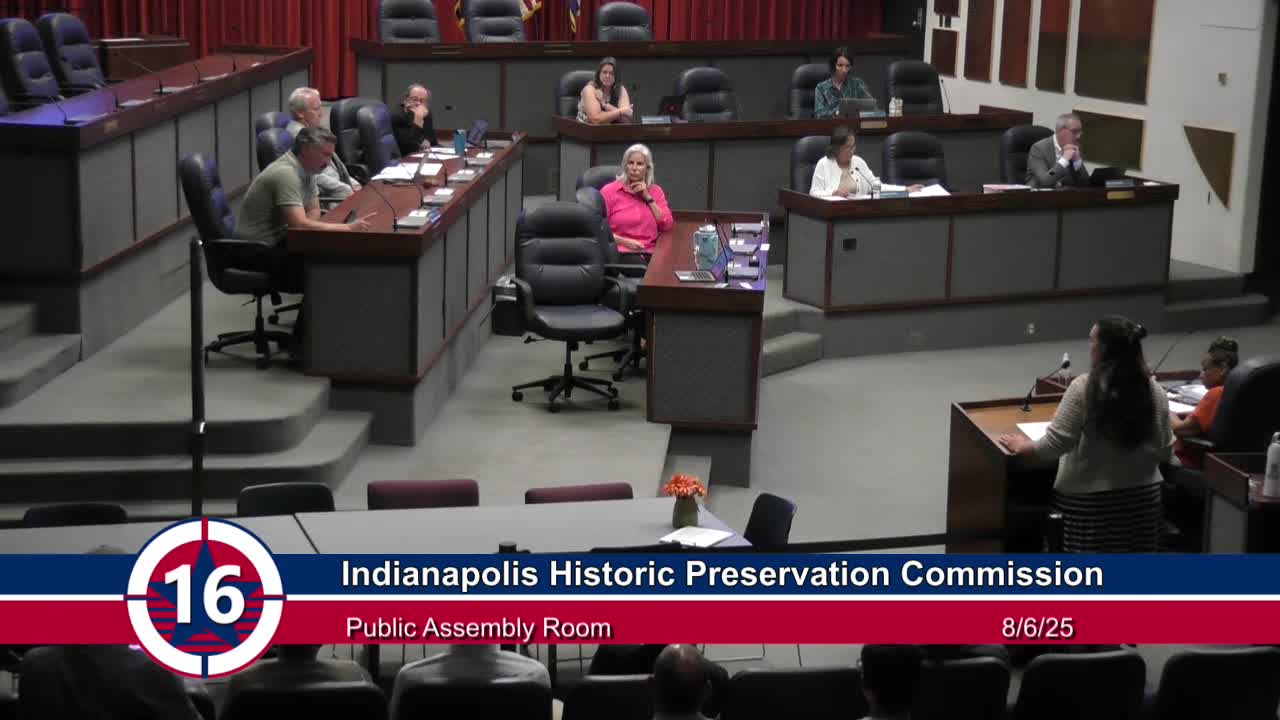Indianapolis Council Proposes Historic Designation for Circle Tower Interior Spaces
August 06, 2025 | Indianapolis City, Marion County, Indiana
This article was created by AI summarizing key points discussed. AI makes mistakes, so for full details and context, please refer to the video of the full meeting. Please report any errors so we can fix them. Report an error »

During a recent meeting of the Indianapolis Historic Preservation Commission (IHPC), significant discussions centered around the potential historic designation of Crispus Attucks and the Circle Tower, highlighting the city's commitment to preserving its architectural heritage.
One of the key topics was the exclusion of Crispus Attucks from the current historic designation efforts. Commission members expressed concern that this landmark, which holds cultural and historical significance, is not individually protected. The discussions emphasized the need for Crispus Attucks to be considered for individual designation due to its unique architectural style and its importance to the surrounding neighborhood. Suggestions were made to engage with the Indianapolis Public Schools (IPS) to garner support for this initiative, indicating a collaborative approach to preservation efforts.
In addition to Crispus Attucks, the commission reviewed plans for the Circle Tower, a notable Art Deco building completed in 1930. The structure, designed by the local firm Ruish and Hunter, features distinctive Egyptian-inspired detailing and has been recognized for its architectural significance, having been individually listed in the National Register of Historic Places since 1997. The IHPC staff, in partnership with the Department of Metropolitan Development and Holiday Properties, proposed a local designation for the interior spaces of the Circle Tower, including its first-floor lobby and a 1930s barbershop. This initiative aims to ensure the long-term preservation of these historically intact areas.
The commission plans to present a detailed proposal for the interior designation at an upcoming meeting, reflecting a proactive stance on maintaining the integrity of Indianapolis's historic sites. Members also noted the importance of protecting additional original materials within the building, such as corridors and stairwells, which contribute to its historical value.
Overall, the discussions at the IHPC meeting underscored a growing awareness of the need to protect and celebrate Indianapolis's architectural heritage, with a focus on both individual landmarks and significant interior spaces. As the commission moves forward, the outcomes of these discussions will likely shape the future of historic preservation efforts in the city.
One of the key topics was the exclusion of Crispus Attucks from the current historic designation efforts. Commission members expressed concern that this landmark, which holds cultural and historical significance, is not individually protected. The discussions emphasized the need for Crispus Attucks to be considered for individual designation due to its unique architectural style and its importance to the surrounding neighborhood. Suggestions were made to engage with the Indianapolis Public Schools (IPS) to garner support for this initiative, indicating a collaborative approach to preservation efforts.
In addition to Crispus Attucks, the commission reviewed plans for the Circle Tower, a notable Art Deco building completed in 1930. The structure, designed by the local firm Ruish and Hunter, features distinctive Egyptian-inspired detailing and has been recognized for its architectural significance, having been individually listed in the National Register of Historic Places since 1997. The IHPC staff, in partnership with the Department of Metropolitan Development and Holiday Properties, proposed a local designation for the interior spaces of the Circle Tower, including its first-floor lobby and a 1930s barbershop. This initiative aims to ensure the long-term preservation of these historically intact areas.
The commission plans to present a detailed proposal for the interior designation at an upcoming meeting, reflecting a proactive stance on maintaining the integrity of Indianapolis's historic sites. Members also noted the importance of protecting additional original materials within the building, such as corridors and stairwells, which contribute to its historical value.
Overall, the discussions at the IHPC meeting underscored a growing awareness of the need to protect and celebrate Indianapolis's architectural heritage, with a focus on both individual landmarks and significant interior spaces. As the commission moves forward, the outcomes of these discussions will likely shape the future of historic preservation efforts in the city.
View full meeting
This article is based on a recent meeting—watch the full video and explore the complete transcript for deeper insights into the discussion.
View full meeting
